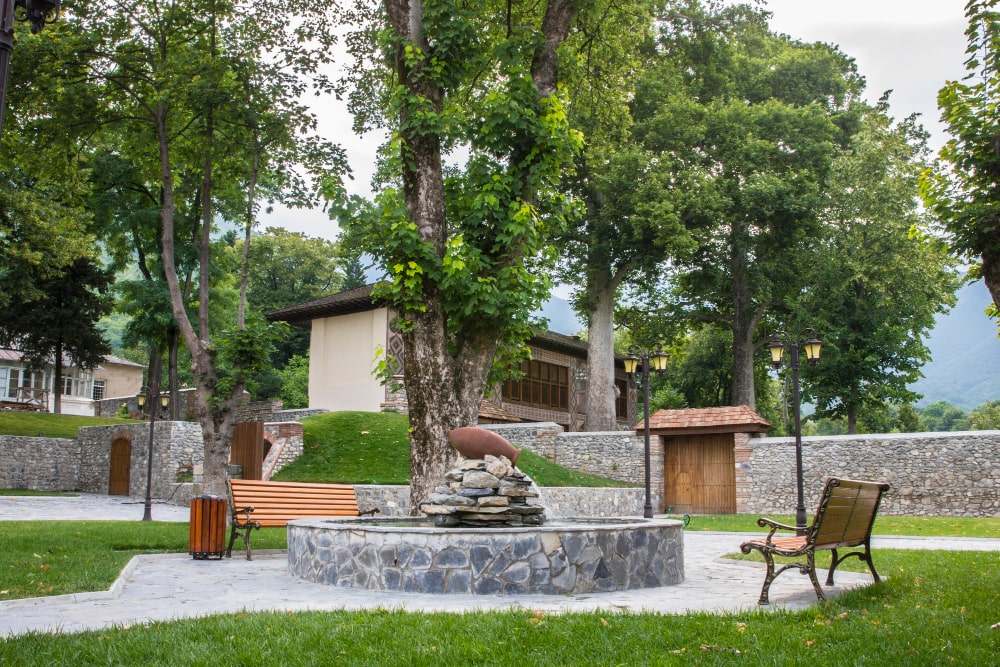
A lush and well-maintained lawn does more than just enhance the beauty of your property; it also plays a crucial role in benefiting the environment. While some may argue that lawns require excessive water and maintenance, a healthy lawn can be a sustainable and eco-friendly asset.
1. Soil Erosion Prevention
A healthy lawn offers essential environmental benefits by preventing soil erosion, acting as a natural erosion control mechanism through its dense network of grass roots, securing topsoil, and sustaining soil fertility and agricultural productivity. Moreover, well-maintained lawns function as carbon sinks, capturing and storing carbon dioxide, thereby contributing to climate change mitigation. In urban areas, lawns play a role in reducing the urban heat island effect by absorbing heat and cooling the surroundings, resulting in lower greenhouse gas emissions from cooling systems. These green spaces also promote cleaner waterways by reducing sedimentation in nearby water bodies, supporting aquatic ecosystems. Beyond their environmental impact, lawns provide recreational spaces for communities, encouraging outdoor activities, and fostering environmental consciousness. Recognizing and nurturing the environmental value of healthy lawns allows us to create positive impacts on the planet while enjoying the diverse advantages of green spaces in our daily lives.
2. Air Quality Improvement
A thriving lawn is an environmental asset, contributing to improved air quality by capturing and filtering pollutants. Through photosynthesis, grass blades absorb carbon dioxide, acting as a natural carbon sink and reducing the overall carbon footprint. Lawns also serve as a natural air purifier, trapping dust, pollen, and other airborne particles, creating a healthier outdoor environment for both humans and wildlife. In urban areas, lawns play a vital role in combating air pollution and the heat island effect, offering a breath of fresh air and a cooling respite. Moreover, the presence of lawns fosters a connection with nature, encouraging outdoor activities that promote physical and mental well-being. Recognizing the environmental value of thriving lawns emphasizes their importance as green spaces that contribute to a greener and more sustainable future for our planet.
3. Water Conservation
Contrary to the misconception that lawns are water-wasting features, a healthy lawn can actually aid in water conservation. When properly maintained, lawns reduce water runoff by allowing rainwater to infiltrate the soil, replenishing groundwater reserves. The dense root system of the grass helps the soil retain moisture, reducing the need for excessive watering. Additionally, well-maintained lawns can act as a cooling agent, mitigating the urban heat island effect, and lowering outdoor temperatures, which, in turn, reduces the demand for energy-intensive cooling systems. However, a good way to avoid watering a lawn at all is to seek professionals who can install artificial turf in Oklahoma City or your surrounding area.
4. Biodiversity Support
A healthy lawn can support biodiversity, especially when thoughtfully designed and managed. Lawns can be integrated with native plants and flowers, which not only adds to the visual appeal but also creates a mini-ecosystem that attracts beneficial insects, birds, and pollinators. As these diverse habitats flourish within the lawn, they contribute to the overall health and resilience of the local ecosystem. By providing essential food sources and safe shelter for various wildlife species, lawns become valuable components of urban and suburban wildlife corridors, fostering connections between green spaces and enabling wildlife to thrive amidst human settlements.
5. Noise and Stress Reduction
A well-maintained lawn serves as a natural buffer against noise pollution, absorbing and diffusing sound waves to create a peaceful outdoor environment, particularly valuable in urban areas. Scientifically proven to reduce stress and promote mental well-being, the soft texture and green landscape of a healthy lawn have therapeutic effects on the mind. Access to a tranquil lawn offers a retreat from daily stressors, allowing individuals to disconnect from technology and reconnect with nature.
Spending time in green spaces has been linked to improved focus, creativity, and an overall sense of well-being. A thriving lawn provides numerous opportunities for relaxation and outdoor activities with family and friends.
Recognizing its multifaceted advantages, a healthy lawn becomes an essential aspect of a balanced and fulfilling lifestyle, benefiting both individuals and the environment.
A healthy lawn can be an ally in environmental conservation, contributing positively to soil stability, air quality, water conservation, biodiversity, and overall well-being. The next time you tend to your lawn, remember that you are not just nurturing a green expanse but also nurturing the environment.
You may also like
How Your Landscaping is Affecting Your Energy Consumption
5 Major Environmental Benefits of Synthetic Grass
The Benefits of Sustainable Landscaping
10 Benefits of Composting For the Environment
